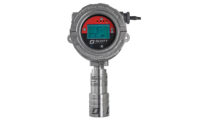What EPA requires
The Environmental Protection Agency regulates hazardous chemical releases in Title 40, Protection of Environment, Part 68 (40 CFR 68) Chemical Accident Prevention Provisions. These regulations require the owner or operator to ensure the process is designed in compliance with recognized and generally accepted good engineering practices. Also required is a Risk Management Plan (RMP) that includes a hazard review and identification of major hazards as well as a description of monitoring and detection systems in use.What OSHA requires
The Occupational Safety and Health Administration has a similar requirement titled Process Safety Management of Highly Hazardous Chemicals (29 CFR 1910.119). This regulation requires an analysis similar to the EPA's RMP that evaluates safety systems (interlocks, detection or suppression systems) in place to mitigate hazards. OSHA also requires the employer to document equipment compliance with recognized and generally accepted good engineering practices.Complying with relevant standards
While several organizations have published standards and recommended practices relating to gas detection and alarm systems, new standards are also being developed. Some have been adopted by agencies such as the American National Standards Institute (ANSI). Most of the standards relate to components of gas detection and alarm systems such as sensors and alarm annunciation devices. Other standards are performance-based and focus on non-component areas such as software configuration or comprehensive system design.
Among the organizations publishing standards relating to gas detection systems are the International Electrotechnical Commission (IEC), the International Society for Measurement and Control (ISA), Underwriters Laboratories (UL), Factory Mutual (FM) and TUV.
Safety instrumented systems
ISA S84.01 and IEC 61508 standards on safety instrumented systems incorporate a hazard risk analysis along with performance and testing requirements for the safety system. These performance requirements address redundancy and diagnostic features and make the system more reliable. Safety systems using advanced architecture with redundancy and diagnostics can reduce 'nuisance trips' as well as improve safety. Also required are periodic testing programs which are intended to detect latent system problems and avoid system failure or 'nuisance trips' which cause process shutdowns or area evacuations and ultimately, are very costly.Integrating the system
Safety system equipment vendors can only be responsible for certifying the components they supply, that is, the logic box, sensors and actuators. It is possible for a system integrator to use certified equipment, but connect the components in such a way that the overall system does not meet the intended safety functions or recognized standards. Because safety system 'architecture' is an important basis for compliance, the system integrator typically initiates third-party certification.Accredited Testing Organizations
OSHA's 29 CFR 1910.7, Accreditation of Testing Laboratories, governs accreditation of Nationally Recognized Testing Laboratories (NRTL) to test and evaluate equipment and materials for workplace safety and to determine whether they comply with appropriate U. S. national regulatory standards. Certification requirements vary between individual NRTLs and each organization applies its own identifying label to products or systems meeting their requirements. Commonly-recognized labels are UL, FM and TUV.Determine relevant certification
A product carrying a certification label may not be specifically tested for use in a safety system. It is necessary to determine the listing category or standards used in certification to decide if the product was tested under relevant use.For example, combustible gas sensors are typically listed for use in flammable atmospheres, a listing which only considers fire or explosion hazards. This listing is not relevant to their use as a hazardous gas sensor. Underwriters Laboratories has developed a category applicable to hazardous gas use (UL 2075 Gas and Vapor Detectors and Sensors) which includes requirements for sensor performance as well as evaluation of fire and shock hazards. These listing requirements are modified and new listing categories are developed as the market evolves.
Reviewing safety systems for third-party certification or approval by the authority having jurisdiction is complex. Many of the standards are generally performance-based and do not specify system configuration or architecture. They do not mandate any particular technology, level of redundancy, or testing methodology or interval. Typical semiconductor fabrication facility gas detection and alarm systems are custom installations that require the installed system to be reviewed to certify for conforming with standards. Firms offering safety system certification include UL, FM and TUV.
Local authorities having jurisdiction may not have resources necessary for this complex review and approval process and may require third-party certification. Although third-party certification can cost from $100,000 to $250,000, it offers benefits to owners and their insurance carriers, users, designers, and vendors as well as to code officials. For the owner, a safety system complying with standards such as those above should not only minimize costly nuisance trips which shut down fabrication production, but, more important, minimize the probability of system failure.
